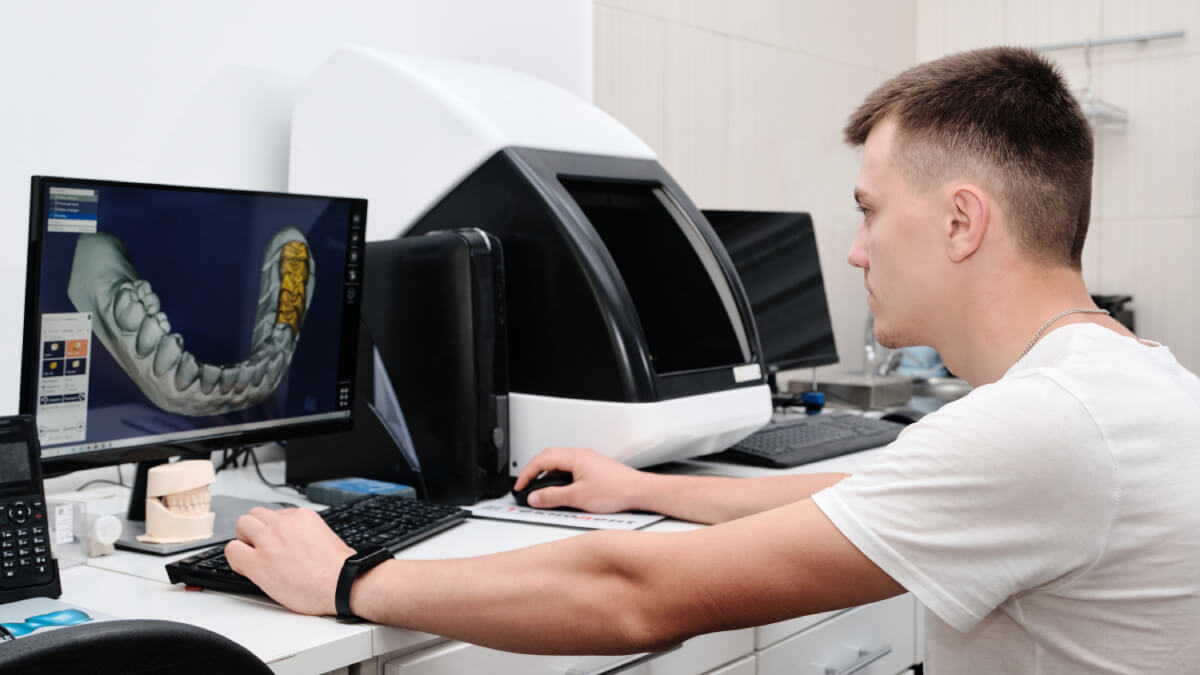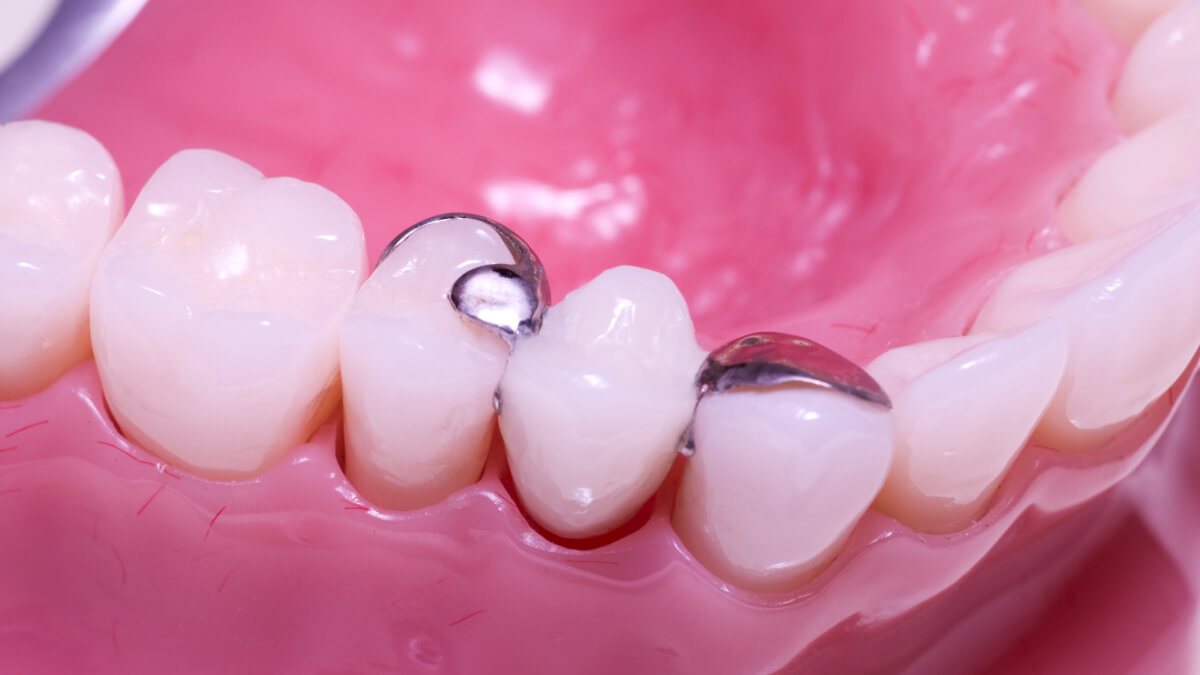What Is A Dental Bridge?
- Author: Diamond Dental
- Date: September 30, 20242024-09-30T07:23:162024-09-30T07:23:15



Dental bridges have become one of the most popular and effective solutions for those dealing with missing teeth. In fact, according to Public Health England, one in ten people attending dental practices in the UK have dental bridges or implants. With these numbers on the rise, we urge each patient at our dental clinic in Milton Keynes to develop their understanding of dental bridges before the time comes when they might need one themselves. That’s why, in this article, we’ll answer ‘What is a dental bridge?’ and explain the transformative effect one can have on your oral health.
Put simply, dental bridges fill the gaps left by missing teeth. Usually, they’re one replacement tooth flanked by a crown on either side. The crowns go over your existing teeth on either side of the gap, locking the tooth prosthetic into place. As the name implies, this appliance ‘bridges the gap’ in your smile. There are multiple types of dental bridges, each helping to restore chewing function, enhance appearance, and improve oral health. So, keep reading for everything you need to know about these variations.

There are four main types of dental bridges, and your dentist will decide which type to use based on your oral health goals. Each dental bridge consists of abutments and pontics. Abutments are the structures that support your dental bridge, and pontics are the artificial teeth that fill the gaps left by missing teeth.
This is the most common type of dental bridge, and it consists of dental crowns on both ends with one or more pontics in between. Traditional bridges are usually made of ceramic or porcelain fused to metal, as these materials are strong enough to replace molars. To make room for the crowns on the adjacent teeth, your dentist will need to remove some of the enamel from the top. That means these teeth will always need to be protected with crowns, even if you are fitted with a different type of dental bridge later on because enamel doesn’t grow back.
To place a traditional dental bridge, your dentist will apply a local anaesthetic before reshaping the natural teeth on either side of the gap. Then, they’ll take dental impressions and send them to a lab where your dental bridge will be created. This process usually takes two to four weeks, but you will be fitted with a temporary bridge in the meantime. When you return to the dental clinic, your dentist will remove the temporary bridge, check the fit of the new one, and bond it in place.

A cantilever bridge is similar to a traditional bridge because it is also attached to natural teeth next to the gap. However, a cantilever dental bridge only features one crown, so they’re used when natural teeth are only present on one side of the gap. That means when your dentist bonds the bridge to the abutment tooth, the pontic will extend across the gap without being attached to the other side. Studies suggest cantilever dental bridges present a higher chance of complications like fractured teeth or loosened crowns because their design makes them weaker than traditional dental bridges. This type of dental bridge is placed using the same method as a traditional dental bridge.
Also known as a resin-bonded bridge, a Maryland bridge doesn’t use crowns to secure itself. Instead, it has metal wings on either side of the pontic that are bonded to the back of the neighbouring teeth. This kind of dental bridge is typically used to replace front teeth as the wings are less visible, but they can’t withstand as much chewing.
A Maryland dental bridge doesn’t require the removal of any enamel to be placed. Instead, your dentist will ensure the adjacent natural teeth are healthy and in good condition so the pontic can be placed between them. They’ll take dental impressions and send them to the lab, so your bridge can be created. At your next appointment, your dentist will check the fit of your bridge before applying a dental etch to the back of your abutment teeth, preparing them for bonding. The wings will be applied to the back of your neighbouring teeth using dental resin cement.

An implant-supported bridge is very similar to a traditional bridge, but it rests on top of dental implants instead of natural teeth. Dental implants attach to the jaw, replacing the missing teeth roots. So, before attaching a bridge to dental implants, you’ll need to wait until they are fully integrated with your jawbone, which usually takes three to six months.
An implant-supported bridge requires several appointments with your dentist, including one surgery appointment. In the first appointment, you’ll be given a local anaesthetic, and your dentist will place your dental implants during oral surgery. Once the implants have integrated, your dentist will attach impression copings to the implants and take dental impressions. While you wait for your implant-supported bridge to be created, you’ll need to remove the abutments. In your final appointment, the implant abutments are replaced, and the bridge will be attached using dental cement or tiny screws.
There are several factors that determine what type of bridge you need, these include:
If you’re not sure which type of dental bridge is best for you, arrange an appointment with our private dentist in Milton Keynes. We’ll assess your oral health and understand your goals to advise you on which type of bridge best suits your circumstances.
Implants and bridges are two of the most popular options for replacing missing teeth. So, if you’re weighing up your options, these are a few key differences between both treatments that will help you decide:
Dental bridges aren’t embedded beneath your gum like implants, so there’s a chance that the bridge’s structure might be visible behind or in between your replacement teeth. However, your dentist will make the bridge look as natural as possible, so they are unlikely to be very visible.
Implants may be the most suitable option if you want to avoid damaging or changing the structure of your existing teeth. In order to fit dental bridges, your dentist may need to shape your natural teeth to support the crowns.
If you look after them well, implants can last as long as natural teeth. However, a dental bridge can weaken over time as they are less secure than implants. While it will last for many years if looked after properly, a dental bridge will eventually require restoration.
In most cases, the dental bridge procedure is far less complicated and time-consuming than fitting implants. Also, implants rely on the jaw bone being dense enough to hold them in place. If your jawbone doesn’t have enough volume, your dentist may be able to treat the problem with a bone graft.
Dental bridges are usually less expensive than dental implants because the procedure is simpler and requires fewer visits to the dentist. At Diamond Dental MK, our bonded fixed bridges start from £525, while our dental implant placement costs £1390 + crown, £950, abutment £250.
Dental implants may not be recommended if you smoke, have had radiotherapy in your jaw area, or have diabetes that isn’t well controlled. Additionally, if you suffer from gum disease, your dentist will help you treat it before a dental bridge or implant can be placed.

As outlined above, dental bridges are generally more affordable than dental implants. However, dental implants may be more cost-effective in the long run because they last considerably longer. The cost of a dental bridge will vary depending on the type of bridge and number of units required. At Diamond Dental MK, our dental bridge prices are as follows:

A dental bridge typically lasts between five and fifteen years, but it can last considerably longer with proper care. Some of the factors that can affect the lifespan of a dental bridge include:
If you have a dental bridge and notice that it feels loose or unsteady, there’s pain or swelling around the bridge, or there are visible signs of damage, it may be a sign that it needs replacing.

Any kind of tooth replacement can be daunting, but dental bridges are a cost-effective, long-lasting, and minimally intrusive way to transform your appearance and oral health. If you’re considering a tooth replacement or want to replace your existing dental bridges, don’t hesitate to get in touch with our team at Diamond Dental MK. We’re a leading dentist in Milton Keynes and are expertly placed to walk you through your options.
Feel free to submit your details below, and we’ll be in touch as soon as possible!

Achieving straight teeth is a common aspiration for patients from their early teenage years all the way up into adulthood, and thankfully, technological and material advancements have meant we now have a diverse range of options for patients seeking to enhance the alignment of their teeth. So, in this article, we’ll explain how to get […]

Despite affecting around eight in ten adults in the UK, tooth decay is often left untreated by those suffering from it. In fact, dental treatments across the board are on a steady decline as more and more people are neglecting their oral health. However, if left untreated, dental conditions like tooth decay can quickly lead […]